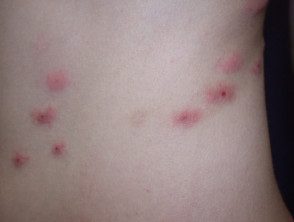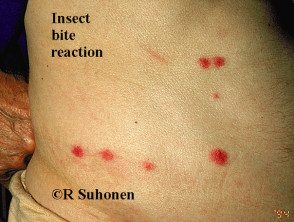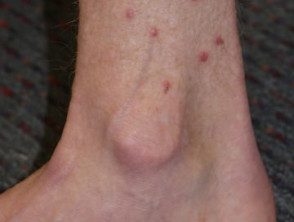What is a flea?
Fleas are housekeeping insects Siphonaptera. They are parasites that survive by sucking blood from their Hosts. Fleas that primarily feed on humans include the human flea, Irritant Pulexand fleas from dogs and cats Ctenocephalides canis and Ctenocephalides felis.
Flea infestations can be difficult to eradicate.
What is the life cycle of the flea?
The flea life cycle consists of four main stages: egg, larva, pupa and adult.
The adult flea survives exclusively through blood meals from its host. During feeding, the flea has a specialized mouthpiece that pierces intact skin and siphons blood. Simultaneously secretes saliva, which can be highly antigenic (allergy-induction). Saliva helps prevent the host's blood from clotting, making it easier for the host to feed.
A flea has three pairs of legs, with long hind legs ideal for jumping. They don't have wings. They can jump up to 18 cm high. Adult pet fleas tend to live on the animal to facilitate access to blood meals.
Female fleas lay round, white eggs that tend to fall off the animal onto bedding, floors, and soil. The emerging larva feeds on organic material in a moist environment that includes the feces of adult fleas. After sufficient growth and development, the larva cocoons and pupates. Cocoons are found on the floor, carpets, under furniture, and in animal bedding. With the right stimuli, such as warm, high temperatures humidity or movement vibrations, the pupa emerges from its cocoon as an adult flea. [1]
The flea life cycle can vary from 2 weeks to 2 years in length, and is usually 8 weeks. Survival depends on proper temperature and high humidity.
Adult fleas move towards a light source, then jump when the light is shaded, e.g. by a suitable warm-blooded host. The flea begins feeding immediately and is estimated to consume 13.6 µL of blood per day. They soon die if removed from the host, and rarely colonize another animal.
Fleas can be difficult to see. They are dark and wingless. They are more obvious if they are jumping on a person in white socks. Flea feces (“flea dirt”) appear like black peppercorns and, when viewed on a wet towel, are red, a result of blood in the feces.
How do I avoid flea bites?
Risk factors for flea bites include:
- close contact with infested pets;
- When visiting a vacant building that previously housed infested pets, fleas may be found on the floors and carpets.
Species that primarily infest cats and dogs may bite humans if they have starved since their last blood meal. Vibrations, e.g. Footsteps upon entering a home can also stimulate adult fleas to emerge from cocoons (pupal stage) and cause human bites.
Prevention of human flea bites is best achieved by:
- restricting the petinterior (or exterior) access
- vacuum carpets and clean bedding
- regularly comb infested pets
- using appropriate insecticide.
Flea eggs can survive for several weeks and pets are easily reinfested, so maintain these long-term strategies to avoid perpetuating infestation. Stubborn infestations may require the help of a professional exterminator. [3]
What are the symptoms of flea bites?
The main symptom of flea bites is intense itching (or pruritus) The bite can also be painful. Scratching can lead to secondary infection.
Some people mount an excessive immune response (allergy) to flea saliva, resulting in a more pronounced or persistent biting reaction called papular urticaria, a form of prurigo. The bite site may become red and swollen, sometimes with a central blister, which may break and become moist and crusty. Old bite marks can be reactivated. Anaphylaxis It has not been reported. [4]
Flea bites are most often found on the lower legs, where fleas can access the skin from jumping height, or on the waist where there is a gap between the shirt and pants or skirt.
Flea bites
Flea bites
Flea bites
Flea bites
Can a flea bite transmit diseases?
A flea can act as a carrier (called vector) for other diseases caused by bacteria and viruses. For example:
- Rat fleas (Xenopsylla cheopis and Xenopsylla braziliensis) are known to transmit bubonic plague and rickettsial typhus.
- Cat fleas can transmit Bartonella henselae, the cause of the scratch fever and bacillate angiomatosis
Tungiasis
Tropical species of sand fleas (Tunga penetrans) burrow on human skin and cause inflammatory reaction known as tungiasis. Tungiasis usually appears as inflamed papules on the feet, especially in the web spaces between the toes, causing pain, itching, and secondary staph infection of the skin.
Tungiasis is an infectious skin disease caused by infestation of the skin with a parasite called Tunga penetrans, known as the sand bug or tunga bug. The parasite is found in tropical and subtropical areas, especially in Africa, Latin America and the Caribbean.
The parasite enters the skin through a bite and is located under the skin, where it feeds on the subcutaneous tissues. Symptoms of tungiasis include rashes, swelling, pain and redness in the affected area.
Tungiasis is especially common in people living in rural areas and in poor conditions, where lack of access to health services and lack of adequate prevention measures are common.
What is the treatment for flea bites?
It is important to try to eliminate fleas from the environment, including from floors and bedding (where eggs are laid) and from household pets.
Treatment for flea bites may include:
- Apply an antihistamine cream or lotion to relieve itching and inflammation.
- Use a cream or lotion with hydrocortisone to reduce inflammation and itching.
- Apply cold compresses or ice to the affected area to reduce inflammation and itching.
- Use an insect repellent to avoid future bites.
- Take oral antihistamines to relieve symptoms of itching and hives.
Pain, redness, drainage, crust and pustules at the site of a bite indicates secondary bacterial infection, often requiring topical or oral antibiotics.
How do you eliminate fleas from the environment?
Several measures have been suggested to reduce fleas in the home environment.
- Wash pet bedding once a week being careful not to spread flea eggs and larvae in the process.
- Vacuum the carpet, floor, and furniture thoroughly to remove adult fleas, flea eggs, larvae, and feces. Seal and discard or burn vacuum bags to prevent re-infestation.
- Steam cleaning the carpet should be done in case of severe infestation.
- Mow frequently in areas where pets spend most of their time outdoors.
- Discourage visits from wild animals that may carry fleas.
- Plant a flea bomb, spray fumigator to control fleas (follow instructions carefully).
- Consult a pest control specialist in placing flea traps and insecticides inside and outside the house.
What is used to treat and prevent pet infestations?
Pets carry about 5% of the total flea population and are the main reservoir of adult fleas. To minimize the use of potentially toxic insecticides:
- Inspect your pet for fleas regularly. Examine the base of the pet's tail, around the neck, in the groin, on the back of the paws, and in the middle of the back.
- Clean the pet regularly with soapy water.
- Brush frequently with a flea comb; Drown fleas in soapy water.
Consult your veterinarian about which insecticides should be used for your pet. The chemicals prescribed will be different in dogs and cats. Listed below are some methods to remove fleas from cats and dogs. Many of these agents are only available through a registered veterinarian.
- Safe topical flea formulations for adults include imidacloprid, fipronil, dinotefuran, metalfumizone, and selamectin.
- Oral insecticides directed at the adult flea include nitenpyram or spinosad.
- Monthly insect growth regulators (IGRs) containing methoprene, pyriproxyfen, alsistin, chromacin, and diflubenzuron and lefenuron do not kill adult fleas, but rather prevent the growth of eggs and larvae. IGRs are available as flea collars, creams, sprays, injections, and pills. They are considered safe. [6, 7]
Combination products are the most effective insecticides but are more expensive.
The following traditional flea control agents are toxic to humans and pets and are best avoided (with the exception of permethrin, which can be used on dogs). Additionally, insect resistance is increasing to these chemicals.
- Organophosphates (chlorpyrifos, dichlorvos, phosmet, clavados, tetrachlorvinphos, diazinon and malathion), carbamates (carbaryl, propoxur)
- Organochlorines
- Pyrethrins and pyrethroids (permethrin, allethrin, tetramethrin, resmethrin, fenvalerate and cypermethrin).




